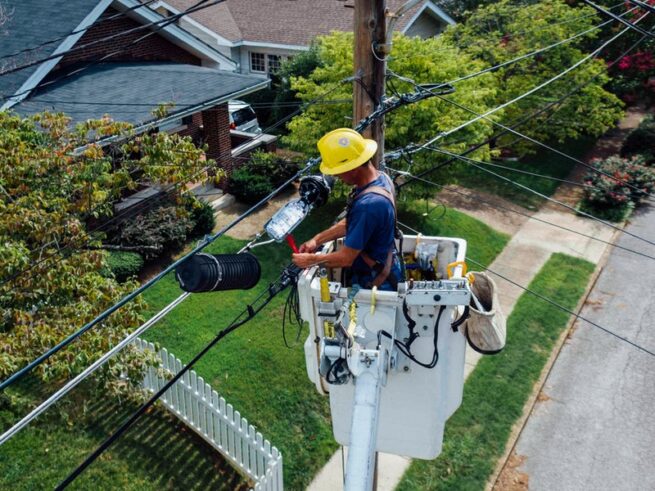When looking at the features of our homes today, it can be difficult to remember that houses didn’t all start out this way—it took centuries of design evolution to get to what we now consider a “normal” layout of a home. It’s possible to trace some design features back to their origins as ways to prevent the spread of infectious diseases. And though it has yet to be seen exactly how the COVID-19 pandemic will influence home design, in 2020 we at least have the benefit of modern science and technology. But that hasn’t always been the case. There are several examples of innovations and architectural features that were implemented to improve the health of the people living in a home that are no longer in use today (or are at least rare finds in older homes). Here are four examples of home health trends that haven’t stood the test of time, and why they were used in the first place.
Outdoor toilets
Believe it or not, there was a point in time when the technology required for indoor plumbing existed, but some people thought it was actually healthier to keep their toilets outside. Even if wealthier households could afford an indoor toilet, they’d continue to use outhouses and chamber pots. In the late 19th century, people were just getting used to the concept of germ theory, and many thought that germs spread through miasmas—or “bad air” that spread disease. This included “sewer gases” that some public health practitioners believed would bring these bad smells—and the germs that come along with it—up through an indoor toilet that was connected to a city’s sewer system, and make people in the household sick. For example, in an 1881 publication entitled Sewer-Gas and Its Dangers, George Preston Brown wrote: “Wherever there are sewers, it is certain there will be sewer-gas. If confined to the sewer, it can do no harm…it is only when it finds its way into houses…that it becomes the enemy of the human race.” By the turn of the century, however, the medical profession was of the opinion that indoor toilets not only wouldn’t spread disease-causing sewer gasses, but that they’re actually much more hygienic and healthier than outdoor toilets.
Spittoons
If you associate spittoons with the archetypal decor of a saloon in the Wild West, you’re not wrong, but you should know that they were much more prominent than that. If you’re not familiar with the item, a spittoon is a receptacle for saliva, resulting from having to spit or cough up phlegm when chewing tobacco. Spittoons typically were made of brass or porcelain, and in addition to homes, they could also be found in train stations, barber shops, hotels, and even the House chamber of the U.S. Congress. Eventually, large, communal spittoons fell out of favor, thanks to the tuberculosis epidemic in the late 19th and early 20th centuries, when doctors realized that spittoons could actually contribute to the spread of TB—especially if someone misses and their saliva ends up on the outside of the receptacle, or on the floor. There were also anti-spitting campaigns in the United States, encouraging people to give up the habit. But the spittoon didn’t disappear completely: Some people with tuberculosis carried pocket-size personal “hygienic” spittoons with them for the occasions when they needed to expectorate in public. At that point, the larger spittoons meant to be shared by an entire household and their guests began to disappear.
Blue glass
If you’ve ever been in an older home and noticed a window made of entirely blue glass, there’s a good chance that it was installed to promote better health. Developed in the 1870s by Augustus James Pleasonton, a former Civil War general, the invention was based on the idea that the blue color of the sky was at least partially responsible for helping living organisms thrive. He put his theory to the test by growing grapes in a greenhouse with alternating blue glass panes on the roof—later claiming that those under the blue panes grew more than those under clear glass. Pleasonton then performed the same experiments with pigs and cows, came to the same conclusion, and secured a patent on the technology. In 1876, Pleasonton wrote a book entitled: The Influence of the Blue Ray of the Sunlight and of the Blue Colour of the Sky, in Developing Animal and Vegetable Life; in Arresting Disease, and in Restoring Health in Acute And Chronic Disorders to Human and Domestic Animals. Interestingly, Pleasonton had no trouble compiling testimonials from people who claimed that blue glass cured their ailments—everything from lower back pain and baldness, to insomnia and health problems associated with an infant being born premature. While the blue glass craze only lasted approximately two years before it was discredited by actual doctors, a remnant of the health fad can still be found in homes in the form of blue glass windows.
Octagonal houses
Yet another example of a Victorian home health trend, octagonal houses really started taking off when Orson Squire Fowler wrote and published the 1848 book The Octagon: A Home for All. In it, he argues that the circle was nature’s ideal structural form, providing the greatest amount of interior space with the least exterior wall. But the building materials of the day tended to be straight instead of curved, so Fowler advocated creating an octagonal external shape to the home, and focusing on making the interior space as close to a circle as possible. His primary argument in favor of the octagonal house was that it promoted better health through enhanced airflow and more natural light. In addition to that, it was more efficient to heat and clean, thanks to its shape. Though octagonal houses fell out of favor by the early 1900s, there are still a few examples left standing in the United States and Canada.
Originally Appeared on Architectural Digest





More Stories
Buying a Condo
Red, White and Blue – What Are The Timeshare Seasons?
What You Need to Know About Selling Your Condominium in Today’s Market